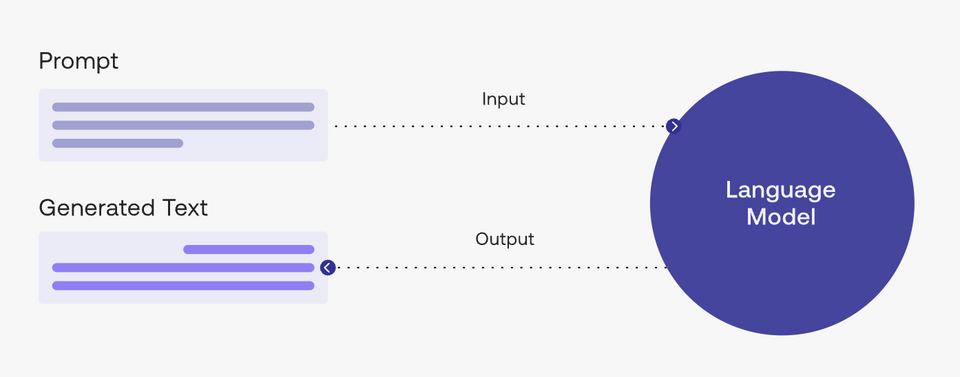Create unique Code with ChatGPT
Search and store tool for Chat GPT Prompt
Create unique and engaging Code with ChatGPT, a pre-trained language model by OpenAI for generating high-quality and accurate content.
Creating a Tutorial on Optimizing Code Performance Using GPT Chat
Create a tutorial on optimizing code performance using Chat GPT.
Act as a PHP Interpreter
I want you to act like a php interpreter. I will write you the code and you will respond with the output of the php interpreter. I want you to only reply with the terminal output inside one unique code block, and nothing else. do not write explanations. Do not type commands unless I instruct you to do so. When i need to tell you something in english, i will do so by putting text inside curly brac...
Tips for Writing Clean and Self-Documenting Code for Better Code Maintenance
Share advice on how to write clean and self-documenting [language] code that is easy for others to understand and maintain.
Comparing and Recommending [Language] Code Formatting Tools and Linters for [Project Description]
Compare different [language] code formatting tools or linters and recommend one that best suits the given project: [project description].
Generating Opinions on Code Snippets using Libraries and Frameworks
Provide a [language] code snippet that demonstrates the usage of a [library or framework] to build a [specific feature or functionality]: [library or framework name].
How to Visualize Code Dependencies with Call Graphs in [Language]
Visualize the call graph or dependencies of the following [language] code: [code snippet].
Identify Areas of Improvement in Your Coding Skills via Code Analysis
Identify areas of improvement in my coding skills based on the following [language] code: [code snippet].
Adapting [source language] Code Snippets to [Target Language] Following Best Practices
Adapt the following [source language] code snippet to [target language] while adhering to [target language's best practices]: [code snippet].
Tips for Migrating Source Code to a New Language with Different Framework
Migrate the following [source language] code that uses [library or framework] to [target language] with a similar library or framework: [code snippet].
Converting [Source Language] to [Target Language] while preserving structure and functionality with code [Snippet]
Convert the given [source language] class or module to [target language] while preserving its functionality and structure: [code snippet].
Improving Code Modularity and Reusability through Refactoring
Refactor the given [language] code to improve its modularity and reusability: [code snippet].
Optimizing Language Code Snippet for Best Performance: Tips and Tricks
Optimize the following [language] code for better performance: [code snippet].
Identifying Opportunities for Design Pattern in Code: Tips and Tricks
Identify opportunities to apply [design pattern] in the given [language] code: [code snippet].
Opinion Generator Function for Language Code Snippets: Expected Input and Output
Document the expected input and output for the given [language] function: [code snippet].
Assessing [Language] Code Performance and Providing Optimization Suggestions
Assess the performance of the following [language] code and provide optimization suggestions: [code snippet].
Evaluating Code Modularity and Maintainability: A [Language] Code Snippet Analysis
Evaluate the modularity and maintainability of the given [language] code: [code snippet].
Improving Error Handling in Language Code: Suggestions and Enhancements
Check the following [language] code for proper error handling and suggest enhancements: [code snippet].
Reviewing and Suggesting Improvements for Language Code Snippet: Best Practices
Review the following [language] code for best practices and suggest improvements: [code snippet].
Reviewing Language Code for Security Vulnerabilities
Review the following [language] code for any security vulnerabilities: [code snippet].
How to Find and Fix Memory Leaks in [Language] Code
Find any memory leaks in the following [language] code and suggest fixes: [code snippet].
What is “prompt engineering”?
A “prompt” is the input that guides a generative AI model to generate useful outputs. Generative AI tools like ChatGPT, GPT, DALL·E 2, Stable Diffusion, Midjourney, etc. all require prompting as their input.

In a natural language processing (NLP) context, “prompt engineering” is the process of discovering inputs that yield desirable or useful results. As is the story with any processes, better inputs yield better outputs; or commonly said another way “garbage in, garbage out.”


Become a prompt researcher instead of engineer
- If you’re already a subject matter expert in something, consider figuring out how to apply your personal skills to generating the best prompts in your field
- For example, if you’re an expert in SEO, what questions do you ask yourself when creating SEO strategies? How can you translate this knowledge into better prompts to generate the same level of output with AI?
Become a prompt researcher instead of engineer
- The term prompt engineer glosses over the idea that prompt formulation takes hypothesizing, research, result measurement, and repetition. Instead, approach prompting like a research project.
- Try as many different variations and formulations of your prompt as possible. One problem can have hundreds of solutions and one solution can have hundreds of approaches. The same can be said of prompting.